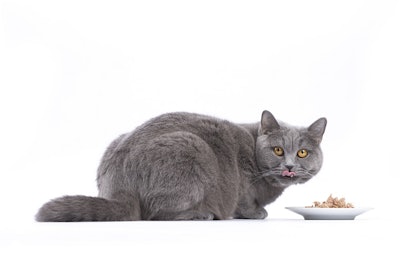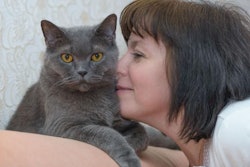
Could technology be the long-awaited, so-called next big thing for pet food – or at least for pet nutrition? Some experts think so.
“In practice and fact, nutrition and technology are inextricably intersected in the U.S. pet industry,” wrote David Lummis, lead pet market analyst for Packaged Facts, in Pet Product News. He commented that it’s difficult to remember when “most pet feeders didn’t auto-dispense food, digitally update pet owners and veterinarians with routine and critical health information, and, duh, automatically reorder food for free home delivery. Or when lots of pets weren’t scarfing down individualized diets based on their own microbiology and DNA.”
Actually, that last concept isn’t yet reality – but perhaps we’re getting closer. Or at least closer to having tools that help pet owners make better, informed choices for what to feed their pets from the overwhelming number of options available on the market today.
Helping pet owners find pet foods and treats
A company called Petrics just announced a new app and software platform promising to help pet owners, and veterinarians, find the “best” diets for individual pets, even taking into account possible food intolerances. The app, which is free, features custom pet profiles, a reminder function for veterinary appointments and medications, and a way to control all connected Petrics products.
Those other products, part of a Petrics “ecosystem,” are still under development; the website says they’re “coming 2019.” They include the standard pet activity tracker but also a new concept: a Smart Pet Bed that includes thermostatic heating and cooling and a built-in weight scale, which will allow a pet owner and even their connected veterinarian to monitor a pet’s weight. That should come in handy for preventing pet obesity, which Petrics correctly focuses on as a significant problem, as well as for tracking declining weight, which could signal an illness.
The main features of the app focus on pet foods and ingredients – and raise the most questions for me. Petrics claims to have a database of “thousands of foods and ingredients” and to offer “advanced nutrition planning” and a patent-pending “food recommendation engine.” All of this is purportedly “procured and validated by health professionals.”
Currently, not enough information is available to verify all the claims, though what is available shows promising signs. A video about pet obesity linked to from the Petrics homepage includes Kimberly Ange-Van Heugten, Ph.D., a teaching assistant professor in the animal science department at North Carolina State University. The video also features a practicing veterinarian, Daniel Wilson, DVM, owner of A Country Veterinary Clinic in Wilmington, North Carolina, USA (where Petrics is also based).
A second video about the importance of pet nutrition, also featuring Ange Van-Heugten, includes this statement: “Whole grains contribute valuable nutrients to diets while helping to keep fat and calories low.” (Their emphasis on “valuable.”) Another statement says there is no single best pet diet, as every pet is an individual. To the question, “What is the most important thing a pet owner could be doing right now?”, Ange Van-Heugten answers, “Educate themselves. Knowledge is power. Know what you’re feeding your animal. Looking at a bag of food or a can of food and actually reading it.”
So far, so good. As long as Petrics is indeed working with experts with education and experience in companion animal nutrition and not applying any sort of non-scientific bias toward certain types of ingredients (though that’s impossible to tell without going through the full process on the app), then this could be a valuable tool for pet owners and veterinarians.
Yet I do have questions about the app’s recommendation engine. The Petrics website says that eventually, the app will have a “buy now” option for the foods it recommends for a pet, allowing the owner to link directly to an e-commerce site (Amazon? Chewy?) to purchase the food. Presumably, Petrics would get a cut of those sales to help fund its business; possibly it receives a portion of sales of food intolerance tests, too.
About that ‘affordable’ test for pet food intolerances
In a press release, Petrics said it has partnered with 5 Strands Affordable Testing to offer an option within the app to test for food intolerances. “By combining Petrics pet food database, covering thousands of foods and ingredients, with 5 Strands testing protocols, consumers and pet care professionals can quickly and easily find foods and treats that are ideal for the pets.”
Note how the testing company’s name includes “Affordable.” The Affordable Pet Plus Food Only Test costs US$189 to $209; whether that’s truly affordable is in the eyes of each pet owner, I suppose. By analyzing strands of the pet’s hair (a non-invasive method using “bio-resonance technology,” according to the press release), 5 Strand purports to test for a pet’s intolerance to over 1,200 food items, all listed on the company’s website. The results are emailed to the pet owner as well as uploaded into the Petrics app profile for the pet.
5 Strands is careful to say that its products (versions are also available for humans) test only for food and environmental intolerances, not allergies. And its website is fairly in-depth and transparent, including an extensive FAQ section. In response to a question about the accuracy of its test results, the company’s answer includes these statements:
A strict elimination diet is truly the only way to test for food intolerances with complete accuracy. While an elimination diet is considered the gold standard, it is extremely challenging for an individual to be disciplined in their food intake and control every aspect of their food sourcing. … Affordable Testing removes the guesswork and makes an elimination diet easier by providing the exact list of items that should take priority in an elimination diet.
While this seems directed toward humans, it stands to reason that elimination diets are pretty difficult for most pet owners to undertake with their pets, too. For an owner wanting to know more about the ingredients that may not be easily tolerated by their pet – and willing to pay about US$200 – opting for this test could make sense.
Yet, I hope any interpretation and consequential actions from the results would be done in close consultation with the pet’s veterinarian. And, more importantly, there’s no way of knowing how accurate the test is. Even 5 Strands admits on its website that no specific clinical studies have been conducted to verify their testing services, though the company adds this: “ … a vast amount of documented research has been conducted over the last 30 years which supports the electromagnetic/electric/magnetic scientific field on which the testing is based.”
Will this become a valuable pet nutrition educational tool?
I have downloaded the Petrics app and plan to fill out profiles for my two cats soon; I’m curious to see what the food recommendation engine turns up for them. Whether I also spring for the 5 Strands food intolerance test for my cat who’s always had a sensitive tummy remains to be seen. No matter what, I look forward to further evaluating if this might be a helpful educational tool for pet owners and veterinarians.
In the long run, it could be valuable to pet food companies, too, because owners and vets who know more about pet food ingredients and their nutrients – if using the Petrics app leads to that type of knowledge – may be more receptive to science-based claims and information, rather than popular marketing messages or rankings from pet food rating sites.

















